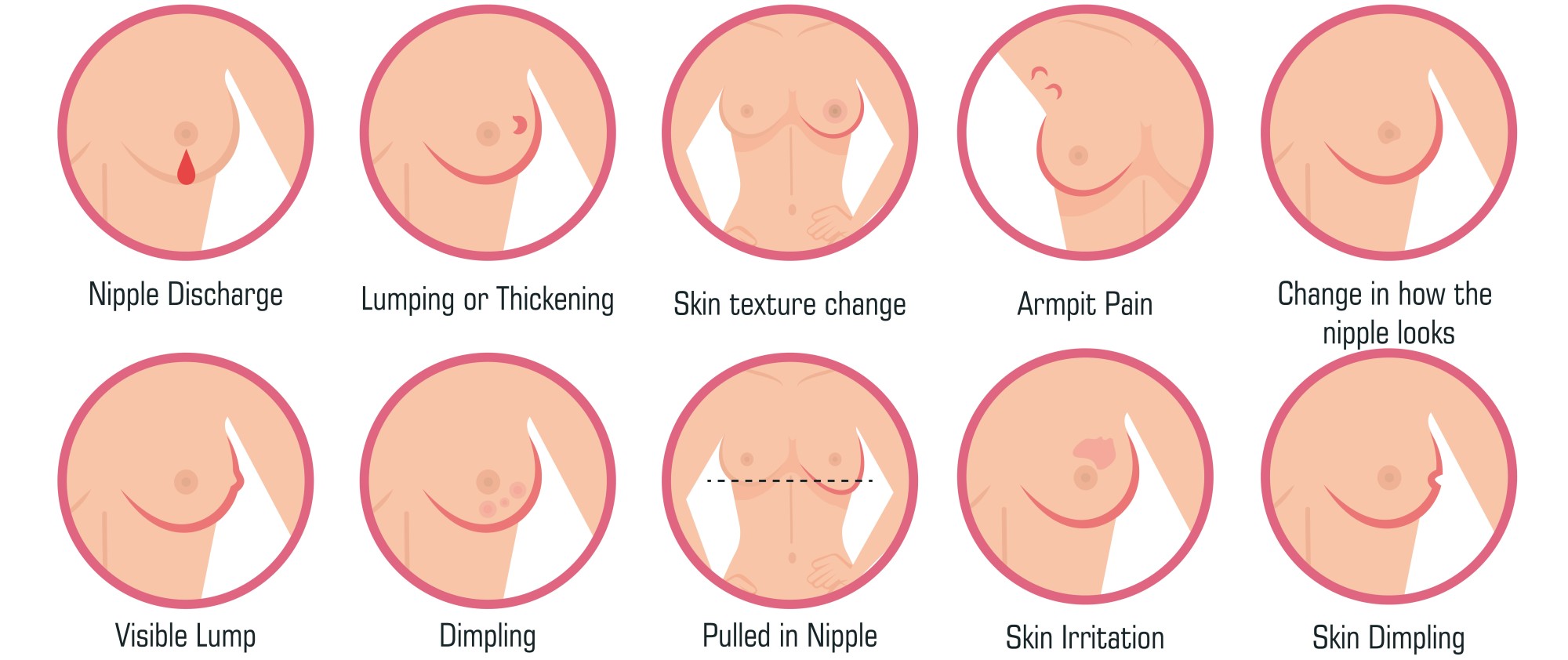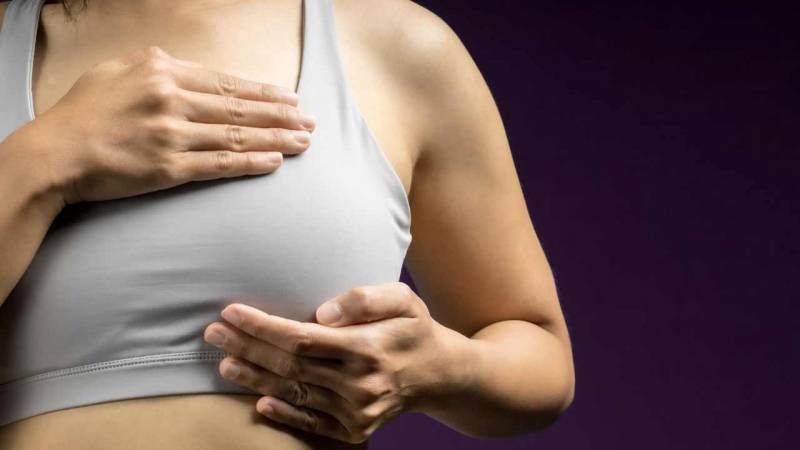Most women find breast lumps on their own, but you don't have to wait for a lump to appear before learning how to check your own breasts at home. The majority of lumps are benign, and by finding them early, you can take better care of them.
You can check your breast health and catch any changes that could be expensive by self-examining your breasts. Every month, preferably anytime after menses but not a few days before menses when the breasts might be sore, it is advised for women over the age of 18, and it should be performed.

However, you don't have to wait for a lump to show up before learning how to check your own breasts at home. Most women discover breast lumps on their own. The majority of lumps are benign, so you can better care for them if you identify them early.
READ ALSO: 5 Easy, Relaxing Stretches for Stress Relief
By checking your own breasts, you can monitor their health and identify any changes that could be costly. Women above the age of 18 are advised to undertake it once a month, preferably right after menstruation but not a few days prior when the breasts may be tender.
Women who are breastfeeding can pair their self-examination sessions with breastfeeding. For instance, after emptying your breasts, you can examine them one after the other. Examining yourself after breastfeeding will reduce the possibility of feeling milk pockets and getting anxious that it could be an abnormal lump.
Whatever category you belong to, a routine examination of your breast will help you track every change as they appear.
First things first…
Before you go on to learn how to do breast self-examination, note that although breast self-examination helps you to detect benign lumps, it doesn’t hurt to complement it with a clinical breast examination.
A more comprehensive examination is best done by your physician, who could recommend further breast imaging (mammography) or ultrasound scanning. The goal of the breast self-exam is to keep you updated with your breast health, and not to replace clinical assessment.
Furthermore, breast self-examination is not a shopping exercise for signs of trouble. You are only checking to make sure everything is good. Therefore, you don’t need to get anxious about anything and everything you find out from the examination.
Now that you know the ground rules, here are three basic steps to a breast self-exam.
Step one: inspect your breast
Every time you shower, put on or take off your clothes, you can see your breasts. A visual self-examination of the breasts, however, necessitates a more methodical approach: you must halt and focus on the breasts for a few minutes.
Your shoulders should be straight as you stand in front of a mirror with your arms at your sides. Look at how the breasts, either one or both, seem. Be mindful of your breasts' size, shape, color, and texture. Small variations in size are OK, but substantial variations should cause alarm.
Your eyes should travel along the contours of your breasts and the margins of your underarms. Keep track of any alterations to the breast skin, such as dimpling, bulging, or strange wrinkles.
Every time you shower, put on or take off your clothes, you can see your breasts. Then, focus on your nipples and the dark region surrounding them (the areola). Examine the two nipples' levels and look for any differences in their positions (whether it is pulling in or sticking out). Keep an eye out for any discharge coming from either one or both nipples.

Once you are done inspecting your breasts and nipples, raise your arms and repeat the visual inspection of both sites. Raising your arms will expose your underarm and tense your breast ligaments to give a more representative appearance.
Next, put your arms on your hips and tighten up your body. Putting your arms on your hips will relax your breasts for another round of inspection.
Step two: feel your breasts
In this phase, you should feel the area around your breast to check for any discomfort, hardness, or strange textures in the tissues. Use your right hand to feel around your left breast and your left hand to feel around your right breast after lying on your back to rest your breast tissues against your body. While both ways are acceptable, some ladies prefer to receive their massages while seated or in the shower.
Keep your fingers together, tight, and straight in whatever position you want. beginning with one side. Then, either from the nipples outward in a circular motion or from the edges inward to the nipples, feel around your breasts using the pad of your three middle fingers, not the tips.
To cover the entire area, stick to a predictable pattern. Starting at your nipples, spiral outward toward your cleavage, down to the base of your breast, sideways toward your armpit, and upward toward your collarbone. Continue in this pattern until your entire breast is covered.
Alternatively, you can arrange your hands in a column, a row of consistently left to right motions, or any other suitable design. But once more, you want to cover every inch of your breast.
Apply mild pressure to the skin and outer layer of your breasts. Then, press firmly to feel the deep tissues near to your ribs; press a little deeper to feel the middle tissues. Put the arm of the side you are massaging over your head at all times while rubbing with the other hand.
Step three: squeeze your nipples for discharge
The last step is to examine your breasts for any odd discharge. For women who are not pregnant or nursing, checking for a discharge is very important. In general, pay attention to the color, consistency, and possibly the smell of the discharge when it comes from your nipples. These characteristics need to distinguish between a normal and abnormal discharge.
What next?
Stay cool no matter what the results of your breast self-examination are. It's possible that you discovered a lump or noted an odd discharge. The majority of these symptoms may be brought on by hormonal fluctuations rather than being indicators of breast cancer.
Women who are pregnant or nursing may have changes in their breasts, such as engorgement, inflammation brought on by an infection (mastitis), lumps brought on by the clumping of breast milk (galactocele), etc.
When you feel pain or discomfort in your breasts before testing, it is normal to take these changes as an indication of a tumor or cancer. However, normal changes in the breast include some touch sensitivity during puberty, fullness during pregnancy, and engorgement during breastfeeding.
lumps caused by the clumping of breast milk (galactocele), an infection (mastitis), and a
Women with a higher risk of breast diseases, such as those with postmenopausal women or those with a family history of breast cancer, should be extra vigilant with the results of the breast self-examination and communicate their findings to their doctors as soon as they can.
In any event, if you discover something new or alarming, you should schedule a medical checkup. To help you decide what to do next, the doctor will take your medical history, perform a physical exam, or prescribe some tests. Your visit to the doctor should also enable you to ask any queries you may have.




